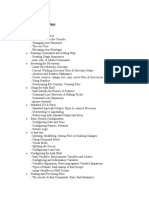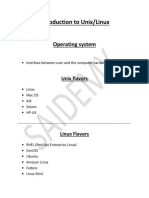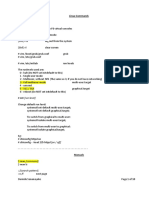0% found this document useful (0 votes)
7 views2 pagesImportant Linux Topics
The document provides an introduction to Linux, covering the boot process, file system hierarchy, and installation of various distributions like CentOS and Ubuntu. It details essential Linux commands for file management, user and group permissions, package management, system monitoring, and job scheduling. Additionally, it includes methods for archiving files and synchronizing directories using tools like tar and rsync.
Uploaded by
amol.dhepeCopyright
© © All Rights Reserved
We take content rights seriously. If you suspect this is your content, claim it here.
Available Formats
Download as DOCX, PDF, TXT or read online on Scribd
0% found this document useful (0 votes)
7 views2 pagesImportant Linux Topics
The document provides an introduction to Linux, covering the boot process, file system hierarchy, and installation of various distributions like CentOS and Ubuntu. It details essential Linux commands for file management, user and group permissions, package management, system monitoring, and job scheduling. Additionally, it includes methods for archiving files and synchronizing directories using tools like tar and rsync.
Uploaded by
amol.dhepeCopyright
© © All Rights Reserved
We take content rights seriously. If you suspect this is your content, claim it here.
Available Formats
Download as DOCX, PDF, TXT or read online on Scribd
/ 2


























































